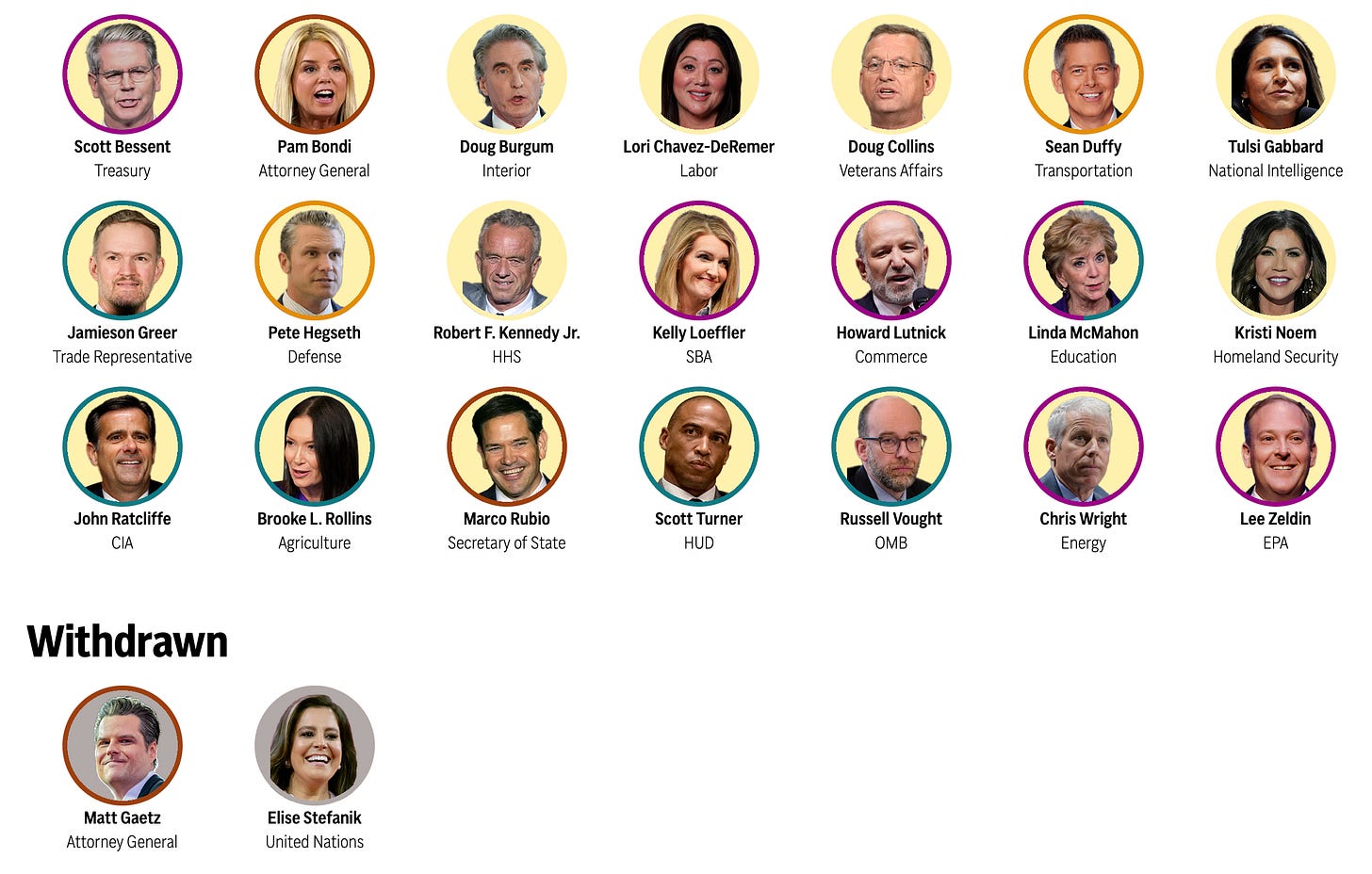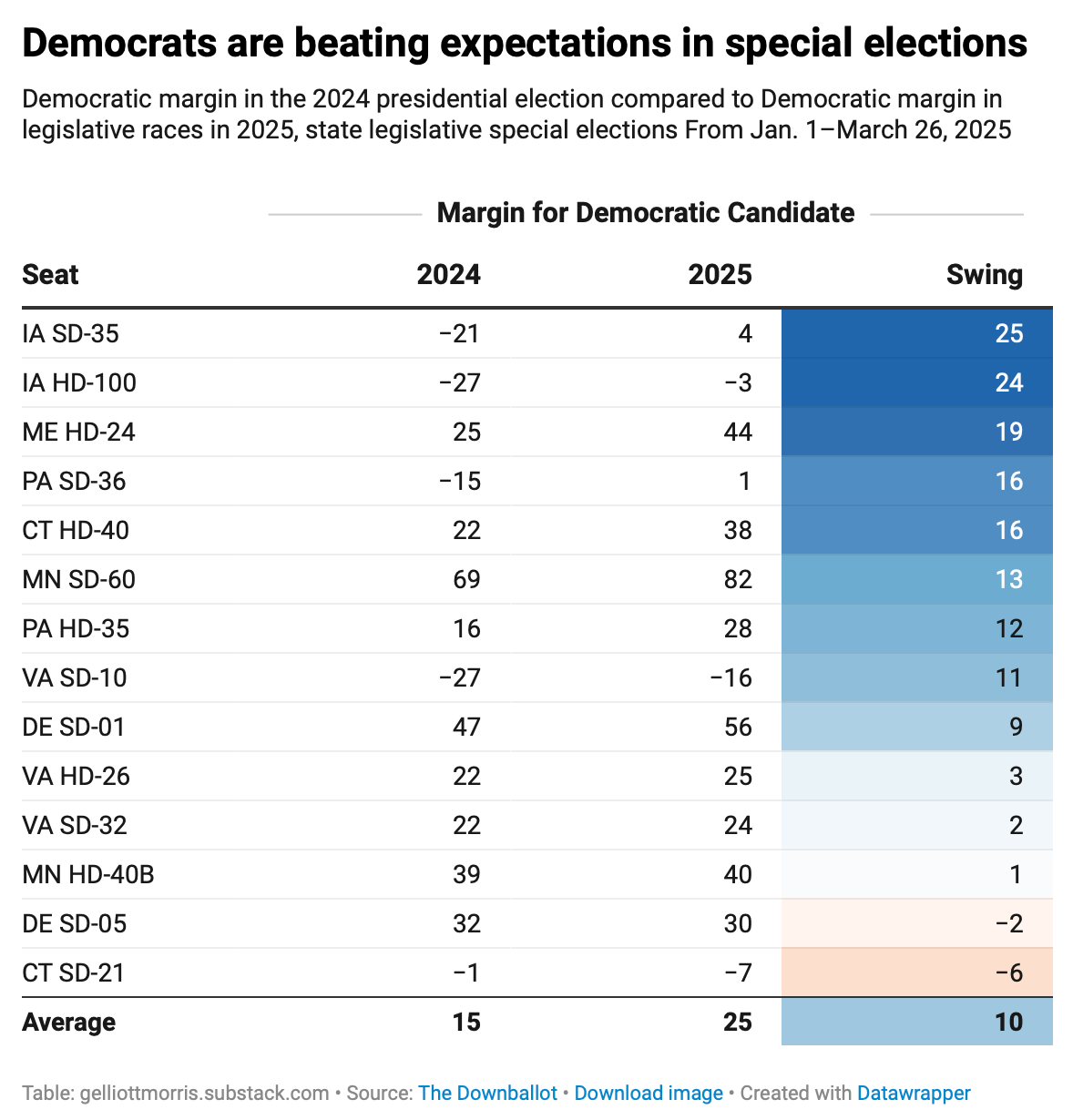Stefanik shows what MAGA fears most
Losing
Big news out of DC this afternoon.
After a “last minute panic”, the White House is pulling Rep. Elise Stefanik’s nomination to the United Nations because “The Trump administration has grown concerned about the narrow margins in the House and what it means for Trump's legislative agenda.”
That avoids a special election in NY-21, which had been slated for later this year.
Why is this the most important news of the day?
Because it shows the path forward for beating MAGA.
Stefanik won by 24 points in November, in a district Trump won by 21 points. This is not considered a toss-up by any definition (even given our focus on making stretch districts competitive).
But a special election is no sure thing for the GOP, due in equal parts to the credibility of Blue Dog-pledged1 challenger Blake Gendebien and how special elections are going for the opposition (poorly! Including a Pennsylvania state Senate seat on Tuesday that hadn’t voted Democratic in 136 years).
Trump himself says he wants “nothing to worry about come Election Day”:
Which means Trump is worried about Election Day.
Two Ways To Win
Trump is now batting 91% on cabinet nominees.
His only losses? Check the handy AP chart on Trump’s cabinet nominations:
There are two ways to beat MAGA.
One is self-implosion, as in the case of nominating Matt Gaetz for Attorney General.
The other is electoral pressure from pragmatic candidates who can win the middle.
The Special Election Party
G. Elliot Morris broke down why “Democrats are winning special elections like it’s 2018.”
The big question is how much of this performance is backlash to Trump, and how much is a change in coalitions. As we’ve documented extensively, Democrats are losing ground with a whole range of categories - young, working-class, Black, Hispanic - except for one.
And that one category where Democrats have gained is a doozy for special elections: highly educated older voters who read the news just love to vote in March or July or whenever.
Morris draws a representative chart showing the relationship between Democratic support and turnout, and how that benefits Democrats in low-turnout elections:
You can read the whole piece here. And see a chart showing how different that curve is than 2012 here.
So how much is the new coalition and how much is the backlash?
Dave Weigel noted that dissonance of the current moment: the “Democratic Party is doomed and dead, and also powerful enough to win an Amish country state senate race and spook Stefanik out of vacating her seat.”
It feels like a version of the “whiskey speech”:
If, by “The Democrats” you mean the the befuddled elitists looking down at masses fleeing their coalition, the overeducated nitwits with a 27% approval rating, the progressive advocacy groups scaring elected officials from rejected wildly unpopular positions, and the leaderless TikTok rookies without a strategy, well then certainly they are doomed.
But if, by “The Democrats”, you mean the civically-minded super voters who will brave any weather to cast a ballot in an uncontested library board election, the obsessive news readers who will surely turn out in a midterm, the only choice against an orange man working his hardest to steer the economy into a recession, well then they are assured victory.
It remains to be seen how much of the special election performance will continue into a medium-turnout midterm in 2026 and a presidential-level turnout in 2028.
But we know Trump is worried about elections2.
And we know that persuasion matters more than turnout. We need to move the curve up regardless.
Pledging? Rushing? Sounds like Greek life
“Trump is worried about elections” is very good for multiple reasons






